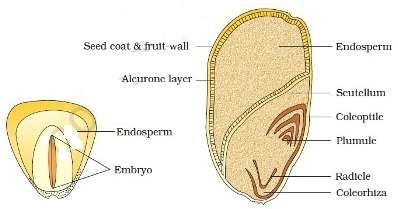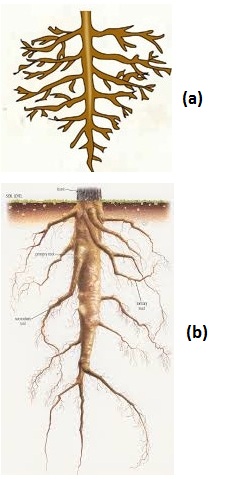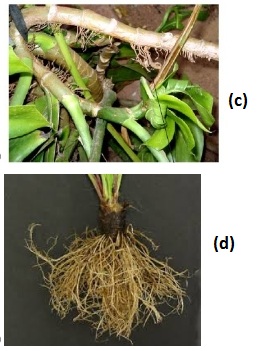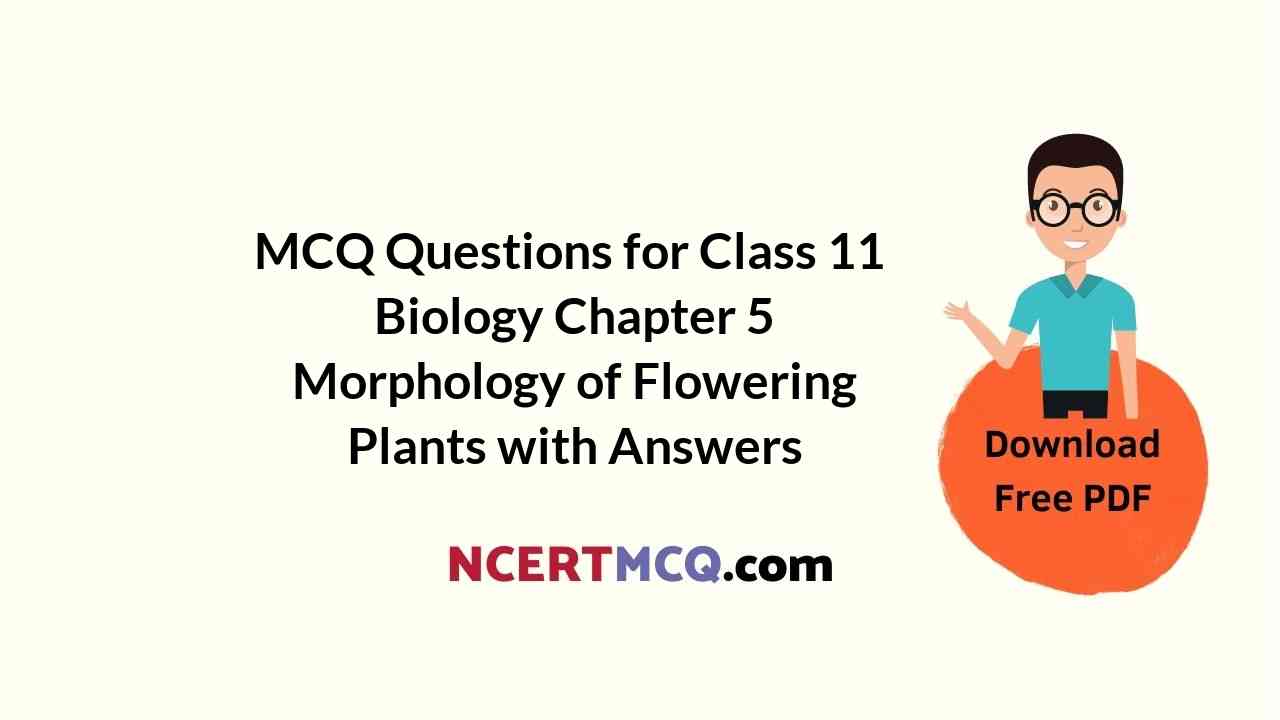Check the below NCERT MCQ Questions for Class 11 Biology Chapter 5 Morphology of Flowering Plants with Answers Pdf free download. MCQ Questions for Class 11 Biology with Answers were prepared based on the latest exam pattern. We have provided Morphology of Flowering Plants Class 11 Biology MCQs Questions with Answers to help students understand the concept very well.
Class 11 Biology Chapter 5 MCQ With Answers
Biology Class 11 Chapter 5 MCQs On Morphology of Flowering Plants
Morphology Of Flowering Plants Class 11 MCQ Question 1.
In tamarind, the pinnate leaf is
(a) bipinnate
(b) tripinnate
(c) paripinnate
(d) imparipinnate
Answer
Answer: (a) bipinnate
Morphology Of Flowering Plants MCQ Question 2.
Artabotrys is a hook climber in which the hooks are modified
(a) inflorescence axis
(b) petiole
(c) roots
(d) stipules
Answer
Answer: (a) inflorescence axis
Class 11 Biology Chapter 5 MCQ Question 3.
Exceptional roots of Cuscuta are
(a) haustorial
(b) coralloid
(c) mucorhizal
(d) all of the above
Answer
Answer: (a) haustorial
MCQs Of Biology Class 11 Chapter 5 Question 4.
The petiole is swollen and spongy in
(a) Nepenthes
(b) Trapa
(c) Clematis
(d) all of the above
Answer
Answer: (b) Trapa
MCQ Questions For Class 11 Biology Chapter 5 Question 5.
Which one of the following plants dose not have root – pockets
(a) Pistia
(b) Lemna
(c) Ficus
(d) Eichhornia
Answer
Answer: (c) Ficus
Chapter 5 Biology Class 11 MCQs Question 6.
The largest petal overlaps the lateral ones in _________ aestivation.
(a) Papilionaceous
(b) Valvate
(c) Twisted
(d) Imbricate
Answer
Answer: (a) Papilionaceous
Explanation:
In pea and bean flowers, there are five petals, the largest overlaps the two lateral petals which in turn overlaps the two smallest anterior petals. This is called Vexillary or papilionaceous aestivation.
MCQ On Morphology Of Flowering Plants Class 11 Question 7.
In Lathyrus, the leaves are modified into
(a) thorns
(b) cladodes
(c) tendrils
(d) spines
Answer
Answer: (c) tendrils
Morphology Of Flowering Plants MCQ Class 11 Question 8.

Label the parts of a monocot seed.
(a) A.Endosperm, B. Scutellum, C. Radicle, D. Coleoptile, E. Plumule
(b) A.Endosperm, B. Coleoptile, C. Scutellum, D. Radicle, E. Plumule
(c) A.Endosperm, B. Scutellum, C. Coleoptile, D. Radicle, E. Plumule
(d) A.Endosperm, B. Scutellum, C. Coleoptile, D. Plumule, E. Radicle
Answer
Answer: (d) A.Endosperm, B. Scutellum, C. Coleoptile, D. Plumule, E. Radicle
Explanation:

Class 11 Bio Chapter 5 MCQ Question 9.
Potato tuber is an underground stem because
(a) it lacks chlorophyll
(b) it is swollen
(c) it possesses axillary buds
(d) it stores starch as reserve food material
Answer
Answer: (c) it possesses axillary buds
Class 11 Morphology Of Flowering Plants MCQ Question 10.
Floating roots are characteristic of
(a) Tinospora
(b) Jussiaea
(c) Viscum
(d) Vanda
Answer
Answer: (b) Jussiaea
Class 11 Biology Chapter 5 MCQs Question 11.
Thors and spines are
(a) homologous organs
(b) analogous organs
(c) thron is homologous while spine is analogous
(d) spine is homologous while is analogous
Answer
Answer: (d) A
MCQ On Morphology Of Flowering Plants Question 12.
Which of the following picture shows fibrous root system?


Answer
Answer: (d)
MCQ Of Chapter 5 Biology Class 11 Question 13.
In which of the following plants stems do not store the food material
(a) potato
(b) ginger
(c) onion
(d) colocasia
Answer
Answer: (c) onion
MCQ Of Morphology Of Flowering Plants Question 14.
In banana, the stem is
(a) underground only
(b) both underground and aerial
(c) absent
(d) aerial only
Answer
Answer: (a) underground only
MCQs Of Chapter 5 Biology Class 11 Question 15.
Srem modified to perform the function of a leaf and having many internodes is called as
(a) phylloclade
(b) cladode
(c) offset
(d) phyllode
Answer
Answer: (a) phylloclade
Question 16.
Certain plants called as runners can be easily propagated. This is due to the fact
(a) they are numerous in numbers
(b) they store the ready food
(c) they lie horizontally on the soil
(d) they can produce adventitious roots quite readily at the nodes
Answer
Answer: (d) they can produce adventitious roots quite readily at the nodes
Question 17.
The coloured part of a Bougainuillea flower is the
(a) corolla
(b) calyx
(c) bracts
(d) androecium
Answer
Answer: (c) bracts
Question 18.
The axillary buds arise
(a) endogenously from the pericycle
(b) exogenously from the tissues of the shoot apex
(c) endogenously from the cambium tissues
(d) exogenously from the innermost layers of cortex
Answer
Answer: (b) exogenously from the tissues of the shoot apex
Question 19.
The arrangement of sepals or petals in floral bud is called
(a) Placentation
(b) Aestivation
(c) Bracteate
(d) Phyllotaxy
Answer
Answer: (b) Aestivation
Explanation:
The mode of arrangement of sepals or petals in floral bud with respect to the other members of the same whorl is known as aestivation.
Question 20.
The term phyllotaxy is used to describe the
(a) type of ovary in a plant
(b) mode of arrangement of leaves
(c) type of roots
(d) arrangement of sepals and petals
Answer
Answer: (b) mode of arrangement of leaves
We hope the given NCERT MCQ Questions for Class 11 Biology Chapter 5 Morphology of Flowering Plants with Answers Pdf free download will help you. If you have any queries regarding CBSE Class 11 Biology Morphology of Flowering Plants MCQs Multiple Choice Questions with Answers, drop a comment below and we will get back to you soon.
Class 11 Biology MCQ:
- The Living World Class 11 MCQ
- Biological Classification Class 11 MCQ
- Plant Kingdom Class 11 MCQ
- Animal Kingdom Class 11 MCQ
- Morphology of Flowering Plants Class 11 MCQ
- Anatomy of Flowering Plants Class 11 MCQ
- Structural Organisation in Animals Class 11 MCQ
- Cell: The Unit of Life Class 11 MCQ
- Biomolecules Class 11 MCQ
- Cell Cycle and Cell Division Class 11 MCQ
- Transport in Plants Class 11 MCQ
- Mineral Nutrition Class 11 MCQ
- Photosynthesis in Higher Plants Class 11 MCQ
- Respiration in Plants Class 11 MCQ
- Plant Growth and Development Class 11 MCQ
- Digestion and Absorption Class 11 MCQ
- Breathing and Exchange of Gases Class 11 MCQ
- Body Fluids and Circulation Class 11 MCQ
- Excretory Products and their Elimination Class 11 MCQ
- Locomotion and Movement Class 11 MCQ
- Neural Control and Coordination Class 11 MCQ
- Chemical Coordination and Integration Class 11 MCQ
